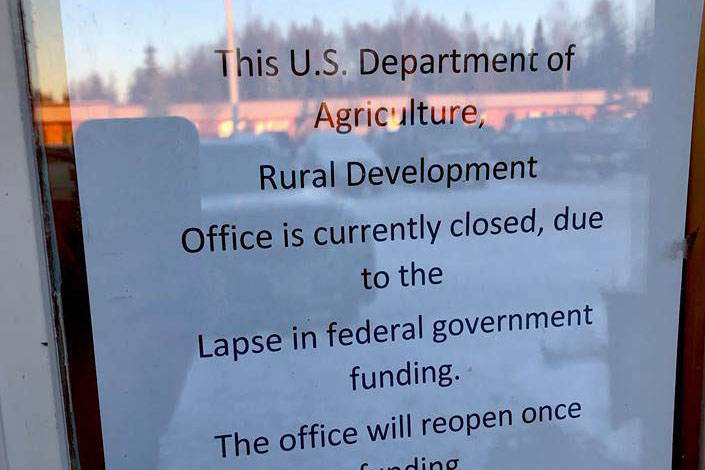The longest shutdown in U.S. history ended Friday when President Donald Trump signed a bill to reopen the government for three weeks. Nearly 700 emails and 60 voicemails awaited Amy Milburn when she returned to work after being furloughed for 35 days. Milburn is the area director for the United States Department of Agriculture and Rural Development office in Kenai. The office is home to only two employees, including Milburn. She said the impact of the partial federal government shutdown went beyond herself and her coworker.
“It was hard knowing how many people were affected,” Milburn said.
Without a regular paycheck, and with the uncertainty of when back pay will come, Milburn said she had to cut costs for her family. She said she cut $600 off her food bill.
“It had an effect on our economy,” Milburn said. “Neither of us were able to go out to eat, which means a server didn’t get a tip and a restaurant didn’t have a customer. I have more heartburn over people who didn’t get their tips.”
She said the effect wasn’t just in food consumption, but with all of her partners in the community.
In Kodiak, which is a part of the office’s service area, 20 percent of the 6,000 person population was not receiving a paycheck. Several Kodiak businesses were offering discounts and IOUs. Milburn said there wasn’t as much awareness about the shutdown on the peninsula.
“It’s not as widely felt in the community when it’s just two people (in our office),” Milburn said. “I didn’t see discounts at grocery stores or in restaurants.”
When Milburn and her coworker were furloughed Dec. 21 last year, the office wasn’t completely shut down. Natural Resources Conservation Services and their employees were funded and able to stay open. Milburn said this was a great thing, as they have more employees.
The USDA-Rural Development office has several programs that help Alaskans become homeowners. According to their website, USDA-Rural Development provides federal assistance resources throughout rural Alaska and has invested $2.16 billion dollars in 236 rural communities in the last eight years. Milburn said all of these programs were brought to a halt during the shutdown. Since furloughed workers can’t discuss work during the shutdown, residents concerned with the status of their loans couldn’t reach out to the USDA office for answers.
“Most of the housing applicants understood it was out of our control,” Milburn said.
Milburn said her office is optimistically hoping there’s not another shutdown.
“We’re glad we’re back,” Milburn said. “It’s hard not being considered essential. It’s kind of degrading.”

